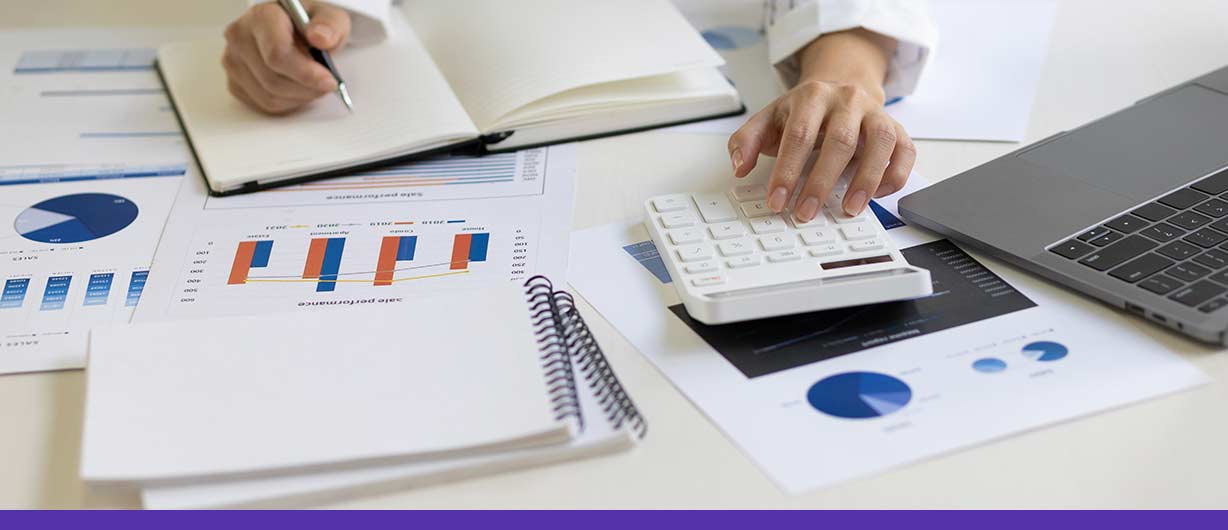July 8 2023 | By Wajiha Danish | 6 minutes Read

What are the accounts listed in a chart of accounts?
1. Assets
2. Liabilities
3. Equity
4. Revenue
5. Expenses
6. Gains and Losses
7. Other
Why is the chart of accounts important?
1. Organization and Structure
2. Accuracy and Consistency
3. Financial Reporting
4. Cost Analysis and Control
5. Decision-Making and Planning
6. Regulatory Compliance and Auditing
7. Scalability and Adaptability
Endnote
In finance and accounting, every successful business relies on a solid foundation of organization and structure. Among the key tools that keep financial matters in order is the Chart of Accounts. Whether you’re an aspiring entrepreneur, a small business owner, or a finance professional, understanding this fundamental concept is crucial to manage your company’s financial health effectively.
The Chart of Accounts serves as a roadmap, guiding you through the intricate network of financial transactions and categorizing them meaningfully. It provides a systematic framework that allows businesses to track, analyze, and report financial data accurately. But what exactly is a Chart of Accounts, and why is it essential?
This comprehensive guide will demystify the Chart of Accounts, exploring its definition, purpose, and components. We will look closer into the different types of accounts it encompasses and discuss how it helps streamline financial operations. Whether you’re initiating a new business venture or looking to enhance your financial management skills, this blog provides a solid foundation for understanding and implementing a Chart of Accounts effectively.
A chart of accounts is a structured list of the accounts an organization uses to record its financial transactions. While the specific accounts may vary depending on the organization and industry, here are some common categories and accounts typically found in a chart of accounts:
– Current Assets (e.g., cash, accounts receivable, inventory)
– Fixed Assets (e.g., property, plant, and equipment)
– Intangible Assets (e.g., patents, copyrights)
– Current Liabilities (e.g., accounts payable, short-term loans)
– Long-Term Liabilities (e.g., long-term debt, mortgages)
– Share Capital (e.g., common stock, preferred stock)
– Retained Earnings (earnings kept within the company)
– Reserves and Surplus (e.g., general reserves, accumulated profits)
– Sales Revenue
– Service Revenue
– Interest Revenue
– Other Operating Revenue
– Cost of Goods Sold (COGS)
– Salaries and Wages
– Rent Expense
– Utility Expense
– Advertising Expense
– Depreciation Expense
– Interest Expense
– Taxes and Licenses
– Gain on Sale of Assets
– Loss on Disposal of Assets
– Other Income
– Other Expenses
It’s important to note that the specific accounts and their arrangement can vary depending on the organization’s needs, accounting standards, and reporting requirements. Some companies may have more detailed or industry-specific accounts, while others may have a simpler chart of accounts. The chart of accounts can be customized to suit the organization’s financial reporting and analysis needs.
The chart of accounts is a fundamental component of the financial accounting systems businesses and organizations use. It is a systematic framework for categorizing and organizing financial transactions, ensuring accurate recording, reporting, and analysis of financial information. The importance of a well-structured chart of accounts can be understood through the following key points:
The chart of accounts provides a standardized structure to classify financial transactions. It defines a hierarchical arrangement of various accounts, which helps organize and categorize financial information logically and systematically. This structure enables efficient data entry, retrieval, and analysis and facilitates comparisons and benchmarking across different periods and entities.
A properly designed chart of accounts promotes accuracy and consistency in financial recording. It establishes clear guidelines for recording transactions, ensuring each transaction is assigned to the appropriate account. Maintaining consistency in the classification of transactions makes it easier to track the financial data over time, aiding in decision-making, financial planning, and performance evaluation.
The chart of accounts is essential for generating financial statements and reports. It serves as the foundation for preparing income statements, balance sheets, cash flow statements, and other financial reports required for internal management purposes as well as external stakeholders such as investors, creditors, and regulatory bodies. By providing a standardized structure, it ensures that all relevant financial information is captured and reported accurately.
An appropriately designed chart of accounts facilitates cost analysis and control. By allocating expenses to specific accounts, businesses can track, and monitor costs related to different activities, departments, or projects. It enables management to identify areas of excessive spending, implement cost-saving measures, and make informed decisions to improve profitability and efficiency.
The chart of accounts is vital in decision-making and financial planning. It provides valuable insights into the financial health of a business by offering a detailed breakdown of revenues, expenses, assets, liabilities, and equity. With this information, management can assess the financial viability of new initiatives, evaluate the impact of different strategies, and make informed decisions about resource allocation, investment, and growth opportunities.
A well-structured chart of accounts ensures compliance with accounting standards and regulations. It enables businesses to accurately report financial information by applicable guidelines, such as Generally Accepted Accounting Principles (GAAP) or International Financial Reporting Standards (IFRS). Additionally, it facilitates auditing processes by providing a clear framework for reviewing and verifying financial transactions, supporting transparency and accountability.
As businesses evolve and expand, the chart of accounts can be adjusted to accommodate changing needs. It allows for adding new accounts, modifying existing ones, or reorganizing account groups to reflect evolving business structures, products, or reporting requirements. This flexibility ensures that the financial system remains relevant and adaptable to the changing dynamics of the organization.
In summary, the chart of accounts is crucial for maintaining accurate financial records, generating meaningful reports, supporting decision-making, and ensuring compliance with accounting standards. Its structured framework enhances financial information’s efficiency, accuracy, and usefulness, enabling businesses to effectively manage their resources, assess performance, and communicate financial results to stakeholders.
The chart of accounts is crucial for organizing financial transactions in a business. It provides a standardized structure for accurate reporting and analysis. Benefits include a clear financial overview, trend identification, and informed decision-making. Creating and maintaining the chart should consider the company’s needs and be regularly reviewed and updated. Leveraging technology, like accounting software, simplifies management. Overall, a well-designed chart of accounts supports accurate reporting, efficiency, and successful financial management.
Also Read: Account Payable Vs. Accounts Receivable
Subscribe for business tips, tax updates, financial fundamentals and more.
MORE BLOGS

If you’re a small business, we will absolutely get it if you say you’re having a hard time choosing a payment platform for your company. And […]
Learn More →
When it comes to accounting, businesses often face a confusing question: which accounting method should we adopt? The choice typically boils down to the cash basis […]
Learn More →
Driving for Uber or delivering with Uber Eats can be a flexible and rewarding way to earn money. But when tax season rolls around, many drivers […]
Learn More →